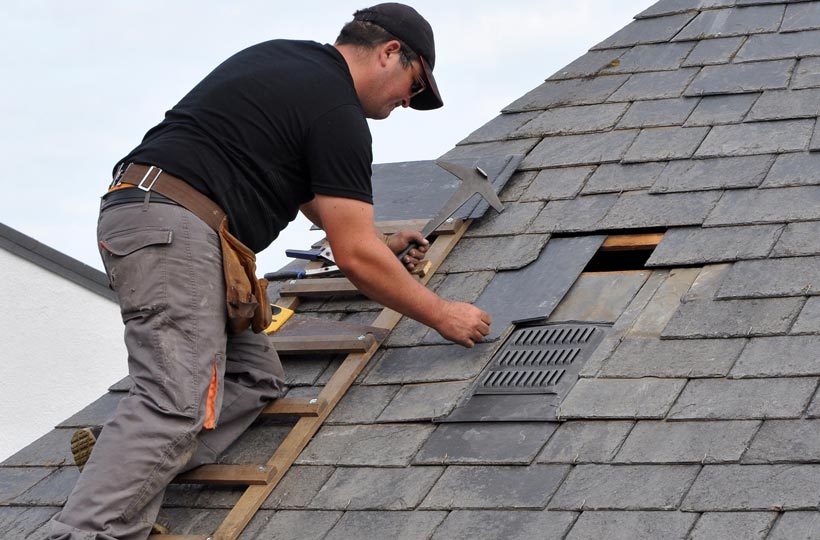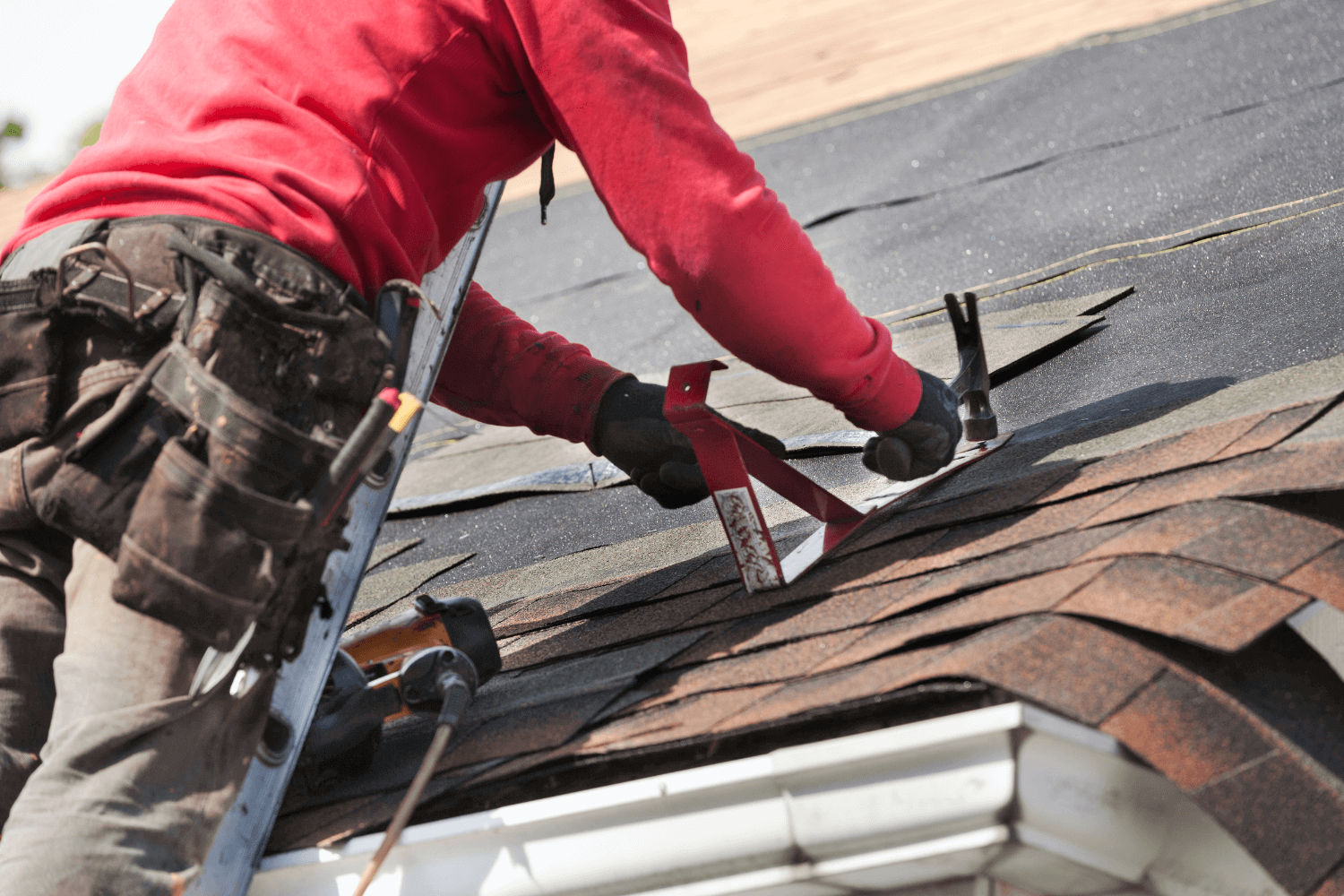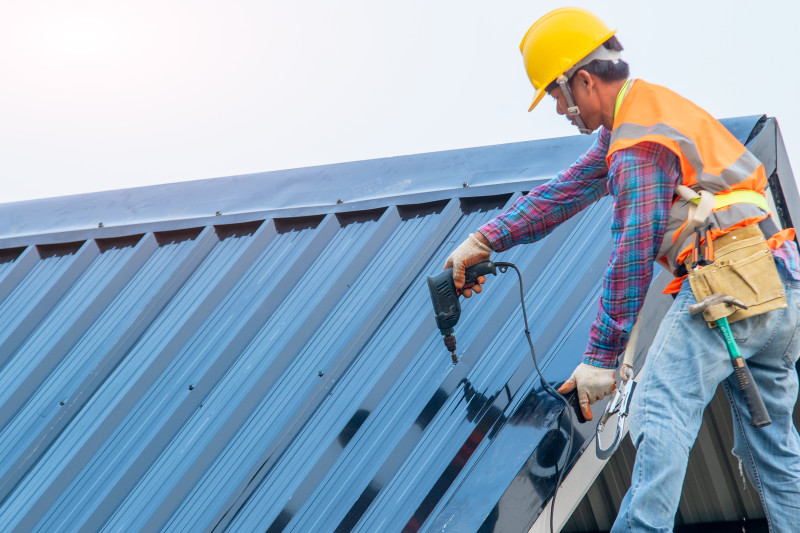Indicators You Required Roofing Repair Service: Shield Your Financial Investment With These Easy Checks
Recognizing the indicators that show a requirement for roof covering repair work is essential for guarding your residential property and financial investment. Typical indicators such as missing out on tiles, unforeseen water discolorations, and granules accumulating in rain gutters can suggest underlying concerns that, if left unaddressed, may escalate right into even more major troubles. Furthermore, indicators like sagging locations or raised power costs can also indicate inadequacies or damages. To ensure your roofing remains in top condition and to stay clear of costly fixings, it is vital to identify these early warning indications and act as necessary. What steps should you take following?
Missing or Harmed Shingles
When reviewing the problem of your roof covering, among the most telling indications of possible issues is the presence of missing out on or damaged roof shingles. Tiles work as the very first line of defense versus the elements, and their integrity is important for keeping the general wellness of your roof covering system - I&E Roofing & Construction, Inc.. A few missing roof shingles might seem minor, however they can cause substantial water infiltration, compromising the underlying structure and requiring more comprehensive repair work
Harmed tiles can materialize in numerous ways, consisting of curling, breaking, or blistering. Each of these problems can minimize the effectiveness of your roofing, enabling wetness to permeate and result in a lot more extreme troubles. Roof Repair. It is important to perform routine examinations, especially after extreme climate occasions, as high winds and heavy rain can intensify shingle deterioration
If you identify missing or harmed shingles, it is advisable to attend to these issues quickly. While minor fixings might be manageable for a home owner, comprehensive damages commonly necessitates specialist intervention. Prompt activity can avoid additional problems and protect your financial investment, guaranteeing the durability and performance of your roofing.
Water Spots on Ceilings
Water spots on ceilings are commonly clear indications of underlying water damages that requires immediate interest. Identifying the source of these stains is necessary, as they can arise from different issues, including roof leaks or pipes troubles. Addressing the origin reason not just protects against more damage yet additionally protects the integrity of the home.
Determining Water Damages

When evaluating for water stains, take note of both the shapes and size of the staining. Irregular forms may recommend recurring leaks, while more defined areas can show past issues. Additionally, think about the place of the spots; spots near pipes fixtures or exterior walls may supply ideas regarding potential sources of the water breach.
It is additionally important to check out the appearance of the ceiling surrounding the discolorations. Peeling off paint or bubbling drywall can signal considerable wetness direct exposure, warranting instant attention. Regular examinations and timely activity can help stop more extreme water damage, securing both the structural integrity of the home and the financial investment it represents. Constantly seek advice from an expert for a comprehensive analysis if you uncover water spots on your ceilings.
Reasons for Stains
What variables add to the appearance of stains on ceilings? Water discolorations, often showing up as blemished spots, are primarily brought on by leakages in the roofing or plumbing systems - I&E Roofing & Construction, Inc.. When wetness penetrates via roofing materials or jeopardized plumbing, it can collect and bring about visible discoloration on ceilings
One usual reason is harmed or missing tiles, which can enable rainwater to permeate right into the attic room and, eventually, to the ceilings listed below. Furthermore, improper blinking around smokeshafts, vents, or skylights can be a significant resource of water breach. Plumbing leakages, whether from defective pipes or overflowing components, can also develop stains, particularly in locations directly listed below shower rooms or kitchens.

Recognizing the resource of the tarnish is important for reliable fixing. Overlooking these indicators can result in much more substantial damage, consisting of mold growth and architectural weakening, underscoring the value of timely treatment to shield your financial investment.
Granules in Seamless gutters
During regular inspections of your rain gutters, the existence of granules can be a considerable sign of roof covering wear and tear. These small, sand-like fragments are generally discovered on the surface of asphalt tiles, functioning as a safety layer versus UV rays and weathering. In time, damage can cause these granules to displace, leading to a series of problems that might compromise the stability of your roofing.
If you discover a build-up of granules in your rain gutters, it is vital to take this sign seriously. The loss of granules may expose the underlying asphalt to the components, raising the threat of leaks and water damage. This circumstance not only jeopardizes your roof covering's lifespan however can additionally lead to pricey fixings if not dealt with quickly.
To minimize prospective damages, it is advisable to check your roofing frequently, particularly after severe weather events. In addition, involving an expert professional roofer to evaluate the problem of your roof shingles can offer beneficial understandings. Early treatment is essential to maintaining your financial investment and making sure the durability of your roofing system. Keep in mind, granules in gutters are not a minor problem; they signify the demand for instant attention and prospective fixing.

Sagging Roofing Locations
Drooping roofing system locations can indicate severe structural concerns that need instant focus (Roof Repair). Noticeable deformities on the roofing's surface area, incorporated with the presence of water stains inside the home, are essential indication that must not be ignored. Addressing these problems promptly can stop more damages and costly repair services
Noticeable Roof Covering Deformities
Exactly how can homeowners recognize possible concerns with their roofing systems? One of one of the most telling signs shows up roof covering deformities, especially sagging locations. A drooping roofing might look like dips or contours, showing underlying architectural problems that might endanger the stability of the whole roof covering system. Property owners should conduct regular evaluations, searching for any kind of recognizable irregularities in the roofline.
A number of variables can add to visible deformities, consisting of water damage, improper setup, or the weight of accumulated snow and particles. If a roofing system appears to sag, it might be a sign of damaged rafters or trusses, which can lead to extra serious concerns if left unaddressed. A drooping roof not only jeopardizes the architectural stability of the home however can likewise lead to expensive repair work expenses if the problem escalates.
If drooping or various other noticeable defects are observed, it is advisable to seek advice from a professional roof covering professional. They can examine the circumstance, figure out the reason for the sagging, and suggest suitable repair service solutions. Prompt intervention is important to shield your financial investment and ensure the durability of your roof.

Water Discolorations Inside Home
The presence of water discolorations inside the home often signifies prospective concerns with the roofing system, specifically in locations where sagging has been observed. These stains usually suggest that water is penetrating via the roof product, which can lead to significant structural damages if left unaddressed. Drooping roofing areas may be triggered by a selection of aspects, including insufficient support, gathered wetness, or the wear and tear of roof products.
When you see water spots, it is important to examine the resource of the dampness. Look for signs of drooping in the roof covering framework, as this can worsen the problem. Typically, sagging locations can trap water, causing leakages and more damages. Additionally, it is important to evaluate the age of the roofing system; older roofings are much more vulnerable to damage, enhancing the probability of leakages.
Prompt activity is necessary to reduce damage. Seek advice from a qualified roof professional to examine the circumstance and suggest proper repairs. Disregarding water discolorations and sagging can bring about costly repair work and jeopardize the honesty of your home. Secure your investment by attending to these signs before they intensify into much more severe issues.
Enhanced Power Bills
An unexpected spike in energy expenses can typically indicate underlying concerns with your roof covering. When your roofing is compromised, it can result in considerable air leakages, allowing conditioned air to leave and unconditioned air to penetrate your home. This inadequacy forces your home heating and cooling down systems to work harder, causing raised power consumption and higher utility prices.
One typical offender is damaged or missing out on roof shingles, which can subject your home's interior to the components. Additionally, inadequate insulation as a result of roof covering damages can add to power loss. If you observe a consistent rise in your energy expenses without an equivalent adjustment in use behaviors, it is essential to examine potential roof-related problems.
Regular roof covering evaluations are crucial for recognizing issues prior to they intensify right into expensive fixings. Search for noticeable signs of wear, such as drooping areas, fractures, or voids. These might indicate that your roof is no more giving the necessary barrier against the components. Attending to these concerns quickly can aid recover your home's energy efficiency and shield your financial investment in the long run. If you think a trouble, consult a roofing specialist for an extensive analysis.
Mold or Mildew Development
Mold or mildew growth on your ceiling or wall surfaces can be a clear sign of roof-related problems, especially when dampness infiltrates your home. These fungi prosper in moist atmospheres and can position serious health and wellness dangers, including respiratory issues and sensitive reactions. Their visibility commonly recommends that your roof covering might be endangered, allowing water to seep in through leaks or gaps.
To assess the scenario, look for dark areas or staining on surface areas, normally in locations near the roofline or where water may build up (I&E Roofing & Construction, Inc.). In addition, look for any kind of water spots, peeling paint, or soft areas in your ceiling or walls, which may suggest recurring moisture troubles
If you see mold or mold, it is necessary to act rapidly. Not just can continued dampness damage your home's structural honesty, however it can additionally cause costly repair work down the line. Involving a professional professional roofer can help identify the resource of the trouble, whether it's harmed shingles, inappropriate ventilation, or various other concerns. Routine evaluations and maintenance can aid avoid mold and mildew development and shield your investment, guaranteeing a secure and healthy living setting.
Age of the Roofing system
Evaluating the age of your roofing system is essential in determining its overall condition and possible demand for fixings. Many roofing materials have a certain life-span, normally ranging from 15 to 30 years, depending on the kind of material made use of. Asphalt roof shingles, as an example, normally last about two decades, while steel roofs can withstand for 40 years or more. As roofing systems age, they end up being extra prone to harm from weather condition, parasites, and other environmental elements.
Routine assessments are necessary for roofings older than 15 years. Indicators of wear, such as broken or crinkling shingles, missing out on tiles, or rust on steel surface areas, show that your roof might require instant attention. In addition, interior signs and symptoms like water spots on ceilings or wall surfaces can indicate underlying issues linked to an aging roofing system.
If your roofing is approaching its expected life-span, take into consideration seeking advice from a professional roofing contractor for an extensive evaluation. They can provide understandings on repair service choices or recommend a replacement if necessary. Aggressive administration of an aging roofing system can stop costly damages to your home and warranty that your investment remains secured.
Frequently Asked Inquiries
How Typically Should I Check My Roofing System for Damages?
Routine roofing system assessments are important for keeping the honesty of your home. It is recommended to check your roof covering a minimum of two times a year, preferably in the springtime and loss, to recognize any type of possible issues at an early stage. Furthermore, after serious weather condition events, such as heavy storms or hail, a detailed assessment is recommended. Dealing with small damages quickly can avoid expensive repair services and expand the lifespan of your roof significantly.
Can I Repair My Roofing Myself?
While it is possible to repair your roof covering yourself, it is vital to examine your abilities and the intricacy of the damages. Minor problems, such as replacing a few shingles, may be workable for a DIY lover. Considerable repair services or structural concerns often require expert know-how to guarantee safety and security and compliance with building codes. Always prioritize your safety and think about seeking advice from a roofing professional for extensive damage or if you doubt concerning the fixings.
What Are the Typical Reasons For Roofing Leaks?
Common reasons of roof covering leaks include damaged tiles, which can occur as a result of age or anchor serious climate, and poorly sealed vents or flashing that might permit water penetration. Furthermore, blocked rain gutters can result in water backup, leading to leaks. Architectural problems, such as sagging roof coverings or jeopardized underlayment, likewise contribute to this issue. Routine assessments and upkeep are vital to recognize these vulnerabilities and avoid expensive damages to your residential property.
Just How Can I Pick a Reliable Professional Roofer?
Picking a reliable roofer involves thorough study and evaluation. Start by seeking recommendations from relied on sources and examining on-line reviews. Validate the professional's licensing, insurance policy, and experience in roofing tasks comparable to your own. Demand in-depth price quotes and compare them for transparency. Furthermore, inquire concerning service warranties and post-installation assistance. A reputable contractor ought to interact clearly and demonstrate professionalism and trust throughout the process, ensuring your investment is well shielded.
What Is the Typical Life Expectancy of Various Roof Products?
The ordinary life expectancy of roofing materials varies substantially. Asphalt tiles generally last 15 to 30 years, while steel roofing systems can withstand 40 to 70 years. Timber trembles generally have a life expectancy of 20 to 40 years, whereas clay or concrete ceramic tiles can surpass half a century with proper maintenance. Artificial roofing materials may provide resilience equivalent to traditional alternatives, usually lasting 30 to 50 years. Understanding these life-spans aids in planning for maintenance and replacement.